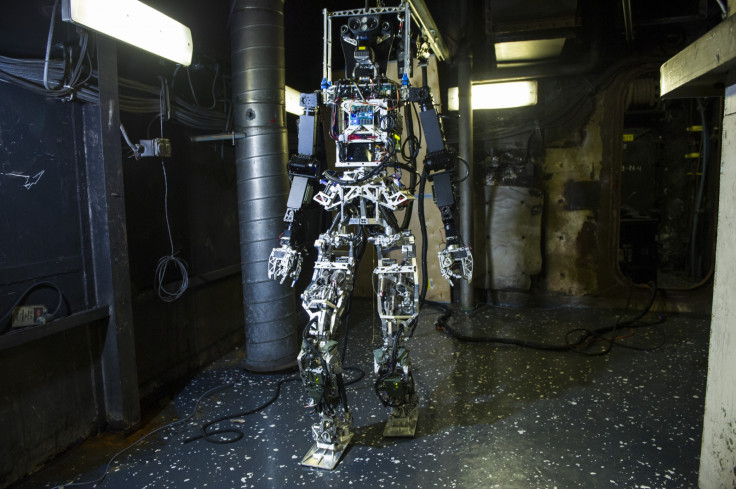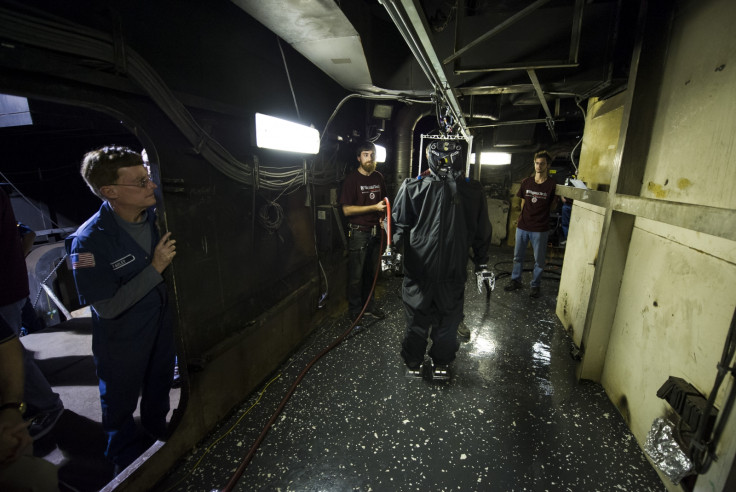US Navy unveils a humanoid robot firefighter to save the day on its warships

The US Navy and Virginia Tech have invented a new human-sized autonomous robot that can locate and fight fires, in order to keep sailors on warships safe.
One of the greatest dangers facing sailors at sea continues to be fire, which can spread quickly and trap sailors restricted by the confined spaces, narrow corridors, ladders and hatches that they need to navigate through multiple levels in a ship in order to escape.
In fact, about 400 years ago, the famous English explorer Sir Francis Drake used to set old ships on fire and let them float freely towards fleets of Spanish ships, which would cause them to break formation quickly in order to avoid catching fire.
Of course, nowadays there are lots of emergency procedures put into place, from on-board alarms, sprinklers, fire doors and fire evacuation drills, but the US Navy wanted a better solution, which could not only protect its sailors, but also potentially save it millions of dollars in damage to its ships.
A bipedal robot that can balance and steer itself
The Shipboard Autonomous Firefighting Robot (SAFFiR) stands 5ft 10in tall and is fire-resistant. Unlike most robots today which move using a wheeled base, it looks like a human and has two arms and two legs.
According to the US Navy, the bipedal robot has "superhuman capabilities" that enable it to walk along any surface in the ship, climb up and down ladders and use its hands and arms to open doors and hatches.
"Balancing on any type of terrain that's unstable – especially for bipedal robots – is very difficult," said Brian Lattimer, an associate professor for mechanical engineering at Virginia Tech who has been working on the robot for four years.
"Whole-body momentum control allows for the robot to optimise the locations of all of its joints so that it maintains its centre of mass on uncertain and unstable surfaces."
Currently, there are two different schools of thought in the robotics industry. One side believes that humanoid robots are the way forward, while the other side believes that robots should just serve one purpose, rather than many.
Colin Angle, the inventor of the Roomba vacuum cleaner, for example, is of the opinion that too much money is being spent on trying to make robots walk like humans.
The robot is equipped with infrared stereovision, i.e. a camera that can see through smoke for a head, as well as a rotating laser that can detect light and range to provide a 3D image of the fire and damage.
When there is a fire, the robot can use its hands to handle hoses on its own, it can navigate obstacles on its own, and it can even throw flame-retardant grenades. And because it is shaped like a man, SAFFiR can be further protected by dressing it in a human firefighter's coat.
Working together to become a robot-human team

Of course, the robot won't just be left on its own to fight fires – it can also take instructions from people located remotely on a computer console.
"The robot has the ability to do autonomous tasks, but we have a human in the loop to allow an operator to intervene in any type of task that the robot's doing," said Lattimer.
Development is still continuing on the robot as the end goal is to have robots and humans working together to fight the fires, so the robots are being taught gesture and natural language dialogue.
"We're working toward human-robot teams. It's what we call the hybrid force: humans and robots working together," said Dr Thomas McKenna, Office of Naval Research (ONR) programme manager for human-robot interaction and cognitive neuroscience.
"We set out to build and demonstrate a humanoid capable of mobility aboard a ship, manipulating doors and fire hoses, and equipped with sensors to see and navigate through smoke.
"The long-term goal is to keep sailors from the danger of direct exposure to fire."
© Copyright IBTimes 2025. All rights reserved.





















